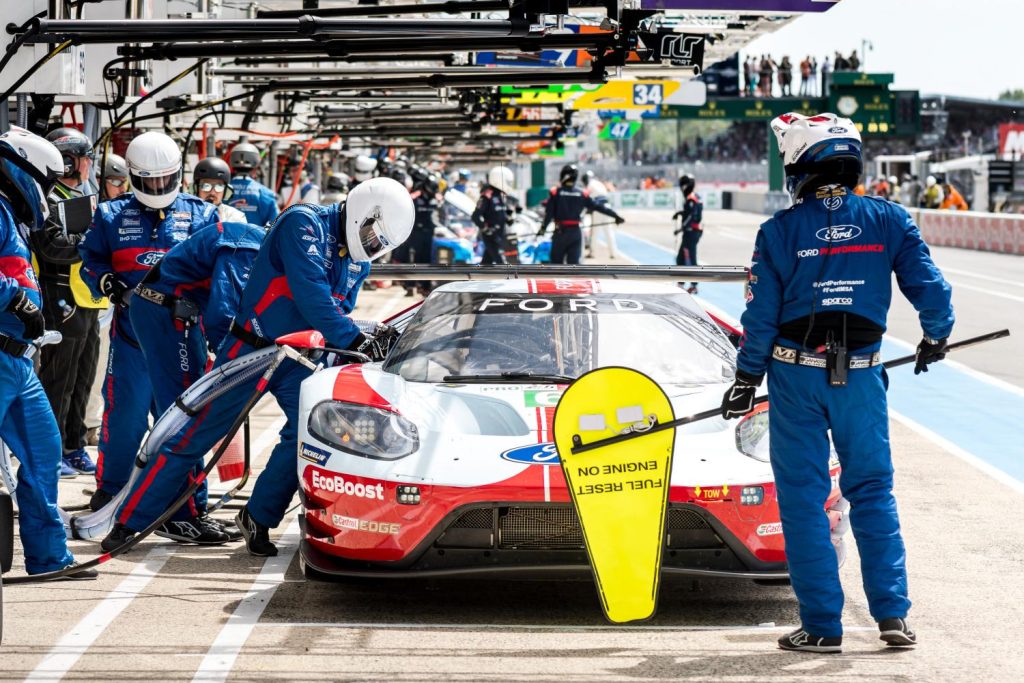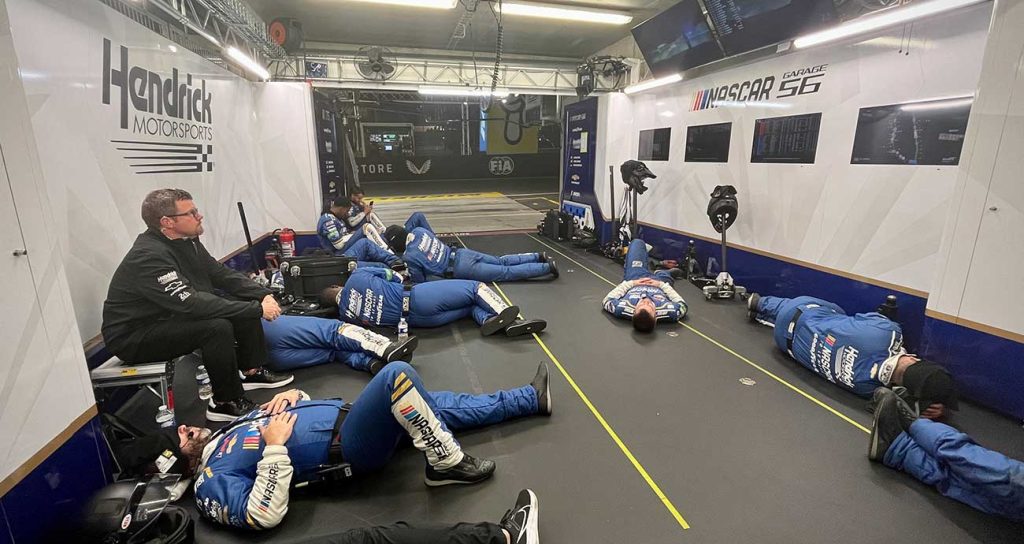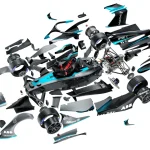By a Petrolhead in Love with the 24-Hour Symphony
There’s racing, and then there’s Le Mans. It’s not just a competition; it’s an odyssey, an opera of speed, stamina, and strategy where cars scream through the night, engineers operate like battlefield medics, and drivers dance with death on every turn of the Circuit de la Sarthe. But while the world watches the frontlines—the glowing brake discs, the breathtaking overtakes, the champagne sprays on the podium—the real story hums in the shadows.
Welcome to the world behind the pit wall, where every second is war, and every unsung hero fights for the glory of 24 hours.
The Beating Heart: The Garage
Step inside the garage of a top-tier Le Mans team and you don’t walk—you tiptoe. It’s not fear, it’s reverence. Here, beneath harsh fluorescent lights, a ballet of precision plays out. Crews move with a silence only broken by the occasional clank of a torque wrench or the hiss of compressed air.
This isn’t your average mechanic’s bay. It’s a surgical theater for speed. Engineers pour over telemetry like doctors reading vital signs. Mechanics, sleepless and smeared with oil, work like sculptors, shaping machines that will soon dance at 330 km/h.
There’s a smell, too—a heady mix of burnt rubber, race fuel, and adrenaline. It’s intoxicating.
Humans as Machines: The Pit Crew

Forget what you’ve seen in Formula 1. At Le Mans, the pit stop isn’t just a box ticked—it’s a strategic masterstroke, a ritual of raw choreography.
Six crew members, no more. That’s the rule. Each knows their role with religious precision. One handles the tire gun. Another switches the driver. A third manages refueling, tethered to a fuel rig like an astronaut to a space station.
But here’s the kicker—this might happen every 45 minutes, and it’s often at 3 a.m., with rain misting and exhaustion gnawing at their sanity. And yet, they execute like clockwork. Because every second saved in the pits is a second gained on the track. In a 24-hour race, that could mean victory—or defeat.
Drivers: The Gladiators
They may get the glory, but Le Mans drivers earn every drop of it.
Imagine this: You’re barreling down the Mulsanne Straight at 340 km/h, at 4 a.m., in fog, with 15 hours already behind you. Your body is screaming. Your mind, fraying. And yet, you’re calculating fuel strategies, preserving tire life, dodging slower GT traffic while chasing down hypercars, all in a cockpit that’s hotter than a sauna.
Le Mans drivers are part athlete, part tactician, part poet. They talk to their machines like lovers. They listen to every rattle, every shiver. One misplaced downshift, one lapse in concentration, and months of work go up in smoke—literally.
And when they’re not in the car? They’re napping in trailers, trying to find sleep that won’t come, or staring into monitors in the garage, living every lap their teammate drives.
Race Engineers: The Brains Behind the Brawn

If the driver is the heart, then the race engineer is the brain. They sit in the pit lane command center like air traffic controllers, surrounded by screens glowing with data—tire pressures, fuel usage, split times, sector deltas.
They read numbers like others read poetry.
One engineer once described their job as “playing chess with a hundred pieces… while someone is throwing knives at you.” Every decision is made in real-time, balancing risk and reward. Pit now and risk traffic? Stretch the stint and pray the tires hold? Call in a tired driver or trust they’ve got one more hour?
The radio crackles. The driver is losing grip. Rain is reported at Arnage. A competitor pits early.
Decide. Now.
Logistics: The Invisible Machine
Weeks before the green flag, the real race begins: the logistical ballet.
A single Le Mans team ships dozens of tons of equipment—cars, spares, tools, IT systems, fuel rigs, tires, food, even coffee machines—across countries. Freight trucks roll like a convoy. Customs papers stack like novels. Every bolt, every cable, every tire is cataloged, tracked, insured.
There’s a guy whose only job is to make sure the espresso machine doesn’t break. No joke.
Back at base, factories run 24/7. Chassis are rebuilt. Aerodynamic tweaks are wind-tunnel tested. Simulations run nonstop. In Le Mans, spare cars are banned, so if you wreck, that’s it. Your only option is to rebuild the wreckage and send it back out.
Team Principals: The Generals
Then there’s the team principal. Calm on the surface, boiling underneath.
These men and women are part coach, part CEO, part therapist. They manage egos, budgets, corporate sponsors, and media—all while tracking lap times. They negotiate driver changes, approve engineering decisions, and keep morale afloat when a gearbox fails at midnight.
They’re the ones pacing in the background, arms folded, eyes scanning the live feed, the data, the weather radar, the pit lane.
When things go wrong, microphones go in their faces. When things go right, they make sure to credit the team. Always the team.
The All-Nighter Culture

Le Mans is not for the faint-hearted. The race doesn’t stop, and neither do the teams.
There’s a rhythm to the night. The distant thunder of engines. The glow of red taillights. The chatter of radios. The clatter of tools. Some mechanics sneak in 10-minute naps behind tire stacks. Others chew gum just to stay alert. Engineers sip cold coffee from paper cups. The driver warm-up area smells like liniment and focus.
And above it all, the clock keeps ticking.
3:00 a.m.
6:00 a.m.
8:00 a.m.
The sun rises, casting long shadows across exhausted faces. Hope flickers again. If your car is still running, if your team is still in it, you fight.
When It All Comes Together
Every member of a Le Mans team knows the odds. The track is cruel. The night is long. The rain is indifferent. One tiny part can fail and end your story in a puff of smoke and disbelief.
And yet, when it works—when the car crosses the line after 24 hours of pain, sweat, and ingenuity—there’s a moment that freezes in time. Team members hug, scream, cry. Drivers collapse into arms. Principals exhale for the first time in a day. Mechanics punch the air with grease-stained fists.
It’s not just a win. It’s a survival story.
The True Spirit of Le Mans
Le Mans is a race for machines, but its soul is human. Behind every car that finishes, there are hundreds of hands that made it possible. Designers who drew lines. Engineers who crunched numbers. Mechanics who wrenched through the night. Drivers who pushed through darkness.
The public sees 24 hours. The teams live 365.
And when the crowd leaves, and the champagne dries, and the engines are silent once more, the garage lights flicker off. But the stories—the whispered tales of miracles and heartbreak behind the scenes—they live on.
In garages. In notebooks. In memories.
This is Le Mans. Not just the race. The people behind it.









